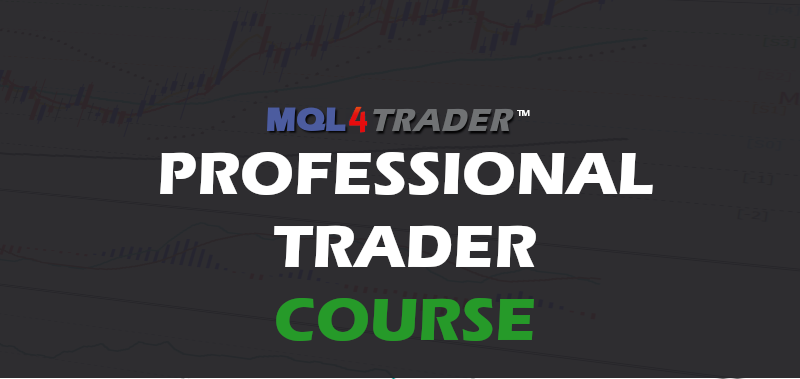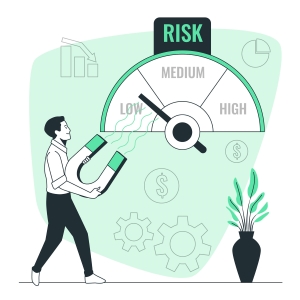
Day Trading Course for Beginners
Day Trading Lesson 4: Risk Management and Capital Preservation
Importance of Risk Management
 Risk management is a critical aspect of day trading that focuses on minimizing potential losses. It's essential to
protect your trading capital and ensure your trading activities are sustainable in the long run.
Risk management is a critical aspect of day trading that focuses on minimizing potential losses. It's essential to
protect your trading capital and ensure your trading activities are sustainable in the long run.
Determining Position Sizes
Position sizing involves determining how much of your capital to allocate to each trade. Proper position sizing ensures that no single trade carries too much risk, preventing significant losses from affecting your overall trading account.
A commonly recommended risk limit is 2% of your account balance. So, for an account of $1000.00, you should set your stop loss to ensure that the lot size selected does not expose your account to a risk exceeding $20.
Every trader has their own risk tolerance though, and it is your decision in the end obviously. Having less capital at risk helps you stay emotionally stable and prevents revenge trading.
Its a lot less emotionally disturbing to lose 2% of your account, on a single trade, than to lose 10%. You also have many more opportunities to make winning trades with less risk.
Risk-Reward refers to the amount of capital you are risking, in relation to the profit you will gain, if your trade succeeds.
Popular risk reward ratios are 1:2 and 1:3. For example; with 1:2 R/R you would risk $100 to win $200 and with 1:3 R/R, you risk $100 to win $300.
With a 1:2 R/R, you only need to be right 33.3% of the time or more because with a 33.3% win rate you will breakeven.
For a fast example, if you had $1000.00 and lost $100 6 times you would be -$600... and then with 4 wins at 1:2 R/R, you would win $200 4 times putting you at +$200.
With a 1:3 R/R, you only need to be right 25% of the time to break even and anything higher than that will result in profitable trading.
Our Ultimate Fibonacci EA, does this calculating for you, as it becomes very confusing to choose the right lot size over multiple different currencies, commodities, indices or stocks that you may be trading.
You simply draw the fibonacci retracement tool and it will calculate the proper lot size for you, based on the risk percentage you have predetermined.
For a lighter weight and extremely efficient lot size calculator, try our Easy LotSize Calculator.
Setting Stop-Loss and Take-Profit Levels
A stop-loss is a predetermined price level at which a losing trade will be automatically closed to limit losses. Take-profit levels are set prices where profitable trades are automatically closed to secure gains. Balancing stop-loss and take-profit distances is crucial for risk-reward optimization.
The power of compounding
Many novice traders often start by aiming too high, trying to double their account with each trade or something close to that.
This approach can be harmful to your trading account. Most seasoned day traders understand that targeting a modest daily return of 5% on your account can, over time, grow any account from less than $100 to over $1,000,000 in a remarkably short period.
Compounding involves recalculating your risk and target profit with each new trade based on your current account balance. For example, if you start with a $1000 account and win your first trade, with a 5% return ($50.00), your new balance will be $1050.00. For your next trade, you will again target a 5% profit, which would be $52.50.
If you win that trade, your new balance will be $1102.5. For the next trade, you would again set a 5% profit target (now $55.13).
Initially, the growth may seem slow, but let's consider how many successful trades it would take to grow $100 into $100,000.00. Open a new window to a compound calculator here: Trading Compound Calculator
On this page, enter $100 for the starting balance, 5 for the gain per period, and 189 for the period. As you will see, it only takes 142 winning trades to reach $100,000 and only 189 winning trades to reach $1,000,000.
If you achieved a 5% goal each day and met that goal daily, then in just over 7 months, you would have over $100,000.00. In 9 months, it would be $1,000,000.00.
There will be losing trades, but if you gain 5-10% on each winning trade and only lose 2% per losing trade, you will still grow your account balance faster than most other investment strategies available.
Managing Emotions and Avoiding Overtrading
Emotional control is essential for successful trading. Greed and fear can lead to impulsive decisions, causing traders to deviate from their trading plan. Additionally, overtrading—trading too frequently—can lead to exhaustion and increased risk.
Day traders and scaplers especially need to keep their emotions in check, because of the fast decision making needed in day trading and scalping. Most decisions need to be made within a matter of seconds to a few short minutes, whereas with longer term trading, you can have hours to even days to make decisions.
Practical Exercises
On a free demo account, practice calculating position sizes, setting stop-loss and take-profit levels, and managing your emotions during simulated trading scenarios. Developing effective risk management habits will contribute to your long-term success as a trader.
We recommend setting up a demo account with fusion to start trading on the MT4 terminal.
Next up: Day Trading Lesson 5: Introduction to Indicators and Oscillators